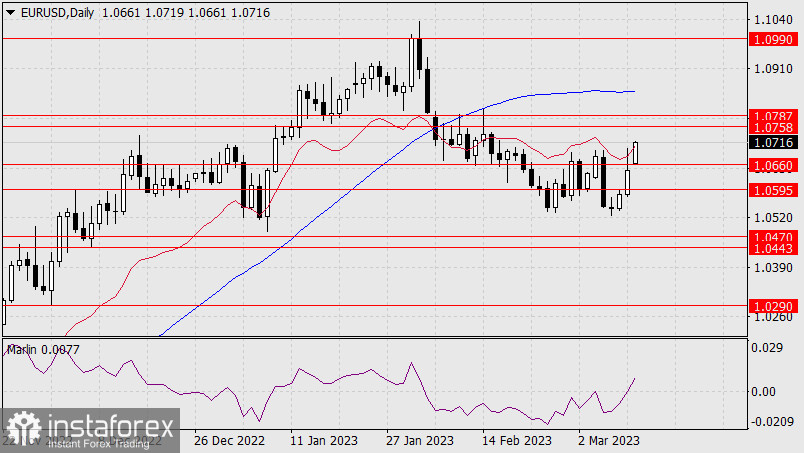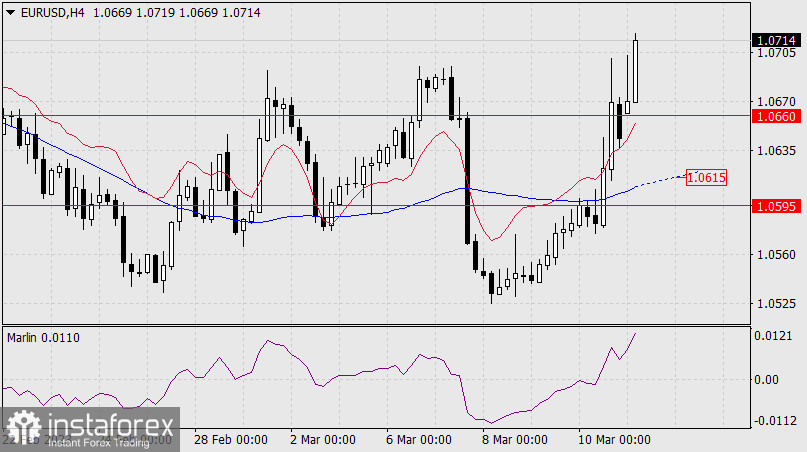Friday's US jobs data, however downplayed by the business media, came out good. Non-farm payrolls data was better than expected: 311,000 vs 205,000. January's index was revised downwards to 504,000 from 517,000, but that's not a significant change. The unemployment rate rose from 3.4% to 3.6%, but the percentage of the economically active population rose from 62.4% to 62.5% and, importantly, average hourly earnings for the month rose 0.2%, indicating a still unsaturated labor market.
Investors did lower the probability of a 0.50% rate hike at the next Federal Reserve meeting from 78% to 50% and the yield on 5-year government bonds fell from 4.19% to 3.97%, but in this situation, we consider the stock market as the main indicator of market sentiment and it fell by 1.45% (S&P 500), which means that strategic investors consider Friday's surge a temporary phenomenon and keep withdrawing from risk. In fact, we saw the shift of funds from stocks to bonds on Friday.

Finally, the Consumer Price Index for February will be released tomorrow; the forecast suggests a monthly growth of 0.4% and the year-on-year decrease to 6.0% from January's 6.4%, which is still a big number and we will know how the FOMC members will take it very soon.
On the daily chart, the price is above the target level of 1.0660, but the closing of the day will likely take place below it, since the day opened with a rising window, and it is not closed. The balance indicator line restrains price growth this morning.

On the four-hour chart, the Marlin oscillator turns downwards, this is the first sign that the bulls are exhausted. The first stage of the reversal is when the price falls below 1.0660 and the subsequent consolidation under the lower level of the "window" at 1.0643. Then we are waiting for an attack on the MACD line near 1.0615. This is the main scenario. An alternative is surpassing today's high at 1.0703 and one more attempt to reach the target range at 1.0758/87.





















